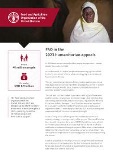Publications

Enhancing nutrition in emergency and resilience agriculture responses to prevent child wasting: FAO's child wasting prevention action plan (2023–2024)
11/2022
As part of the United Nations Global Action Plan on Child Wasting, FAO requires USD 500 million to implement its action plan to prevent child wasting (2023–2024) in the 15 most-affected countries.
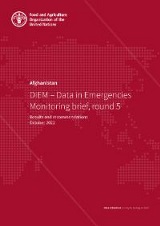
Afghanistan: DIEM – Data in Emergencies Monitoring brief, round 5
11/2022
This Data in Emergencies Monitoring (DIEM-Monitoring) brief shares the results of a fifth-round assessment conducted between July and August 2022 in Afghanistan.
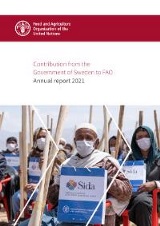
Contribution from the Government of Sweden to FAO: Annual report 2021
10/2022
In 2021, the Government of Sweden, through the Swedish International Development Cooperation Agency (Sida), contributed SEK 94 million (USD 11.08 million) to the Food and Agriculture Organization of the United Nations (FAO) emergency and resilience programme.
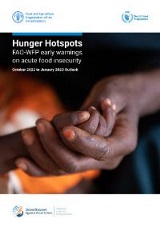
Hunger Hotspots: FAO-WFP early warnings on acute food insecurity (October 2022 to January 2023 Outlook)
09/2022
The Food and Agriculture Organization of the United Nations (FAO) and the World Food Programme (WFP) warn that acute food insecurity is likely to deteriorate further in 19 countries or situations – called hunger hotspots – during the outlook period from October 2022 to January 2023.
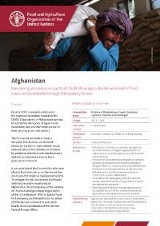
Afghanistan: Minimizing secondary impacts of COVID-19 on agricultural livelihoods of food insecure households through Anticipatory Action
09/2022
In early 2020, a scenario analysis on the expected secondary impacts of the COVID-19 pandemic in Afghanistan pointed to a potential disruption of agricultural livelihoods and a further deterioration in food security.

Special Fund for Emergency and Rehabilitation Activities (SFERA): Annual Report 2021
07/2022
This annual report provides a brief description of the major operations initiated with the Special Fund for Emergency and Rehabilitation Activities (SFERA) for the 12-month period ending 31 December 2021. The report contains financial data for this period, as well as data since the Fund became operational.
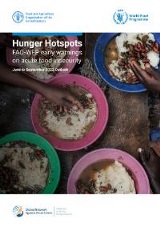
Hunger Hotspots: FAO-WFP early warnings on acute food insecurity: June to September 2022 Outlook
06/2022
The Food and Agriculture Organization of the United Nations (FAO) and the World Food Programme (WFP) warn that acute food insecurity is likely to deteriorate further in 20 countries or situations (including two regional clusters) – called hunger hotspots – during the outlook period from June to September 2022.

Afghanistan: Humanitarian Response Plan 2022
06/2022
Currently, nearly one in two Afghans do not have adequate means to produce or access food for themselves and their families each day.
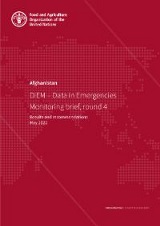
Afghanistan: DIEM – Data in Emergencies Monitoring brief, round 4
05/2022
This Data in Emergencies Monitoring (DIEM-Monitoring) brief shares the results of a fourth-round field assessment conducted between March and April 2022 in Afghanistan.

2022 Global Report on Food Crises: Joint analysis for better decisions
04/2022
The 2022 Global Report on Food Crises (GRFC 2022) highlights the alarming deterioration of acute food insecurity in 2021
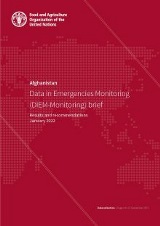
Afghanistan: Data in Emergencies Monitoring brief
01/2022
Results and recommendations, January 2022 – This Data in Emergencies Monitoring (DIEM-Monitoring) brief shares the results of a field assessment conducted between 1 August and 23 September 2021 in Afghanistan.
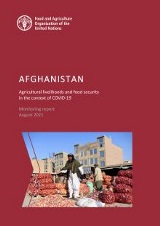
Afghanistan: Agricultural livelihoods and food security in the context of COVID-19
09/2021
Monitoring report, August 2021 – This report shares an analysis of the effects COVID-19 in the agri-food system in Afghanistan. It analyses the results of a field assessment conducted between 7 and 26 February 2021.
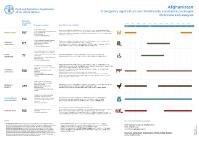
Afghanistan: Emergency agriculture and livelihoods assistance packages
09/2021
This factsheet presents a detailed overview of the main emergency agriculture and livelihoods assistance packages that FAO provides to the most vulnerable farming families in Afghanistan.
![1_Appeal 2021_Afghanistan_updated[1]-1](/images/devemergencylibraries/publications-import/1_appeal-2021_afghanistan_updated-1--1.tmb-th600x450.jpg?Culture=en&sfvrsn=892a92f1_1)
Afghanistan: Humanitarian Response Plan 2021
03/2021
Four decades of conflict, recurrent natural disasters (most notably droughts and floods) and limited capacity to cope with climate-related shocks have caused massive population displacements and left millions of people in acute food insecurity. FAO is requesting USD 50 million to assist 3.5 million people to improve their food security and livelihoods.
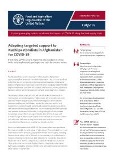
Adapting targeted support to Kuchi pastoralists in Afghanistan for COVID-19
07/2020
Kuchi pastoralists, numbering around 2.4 million people in Afghanistan, are one of the region’s most vulnerable groups.
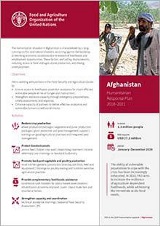
Afghanistan: Humanitarian Response Plan 2020
02/2020
The humanitarian situation in Afghanistan is characterized by a long running conflict and increasing natural disasters, occurring in the backdrop of declining economic conditions due to erosion of livelihoods and employment opportunities.

